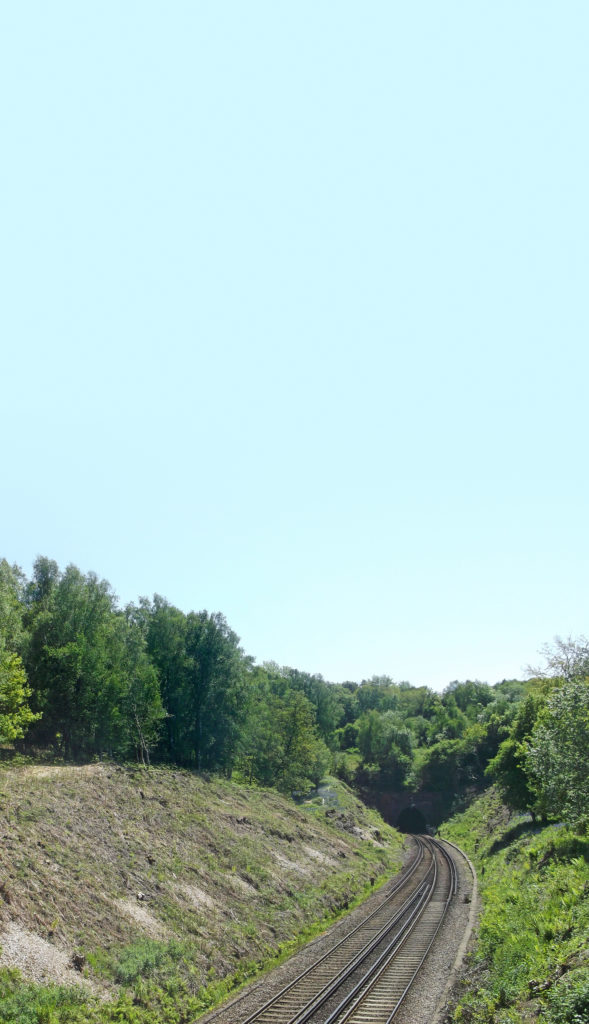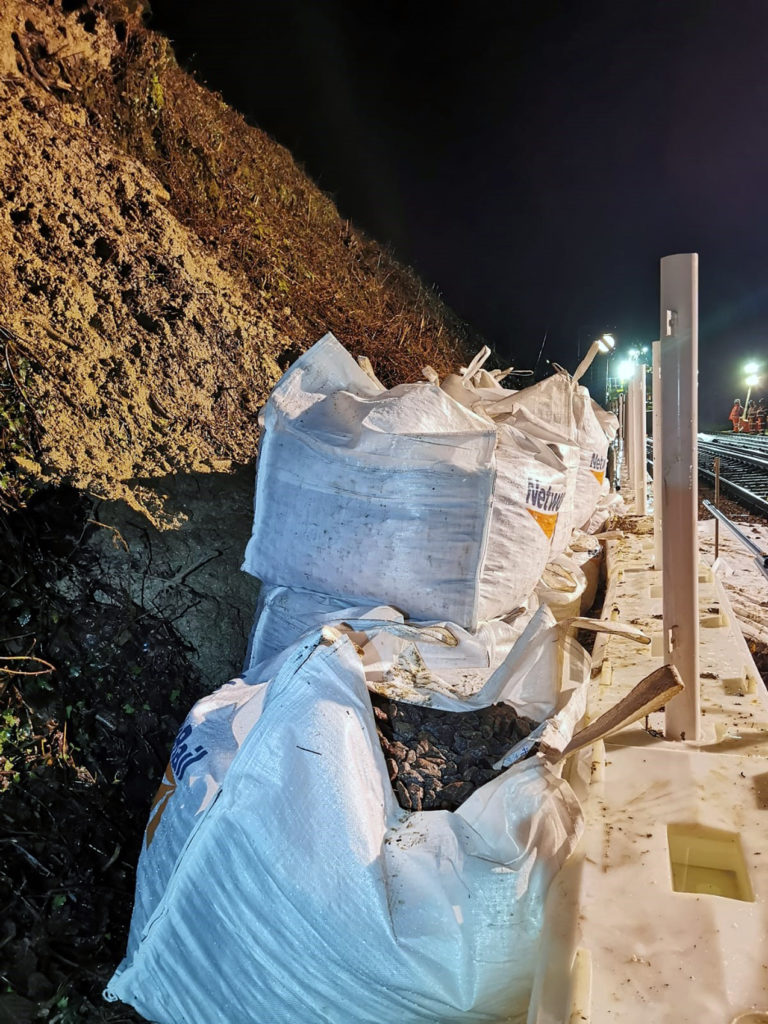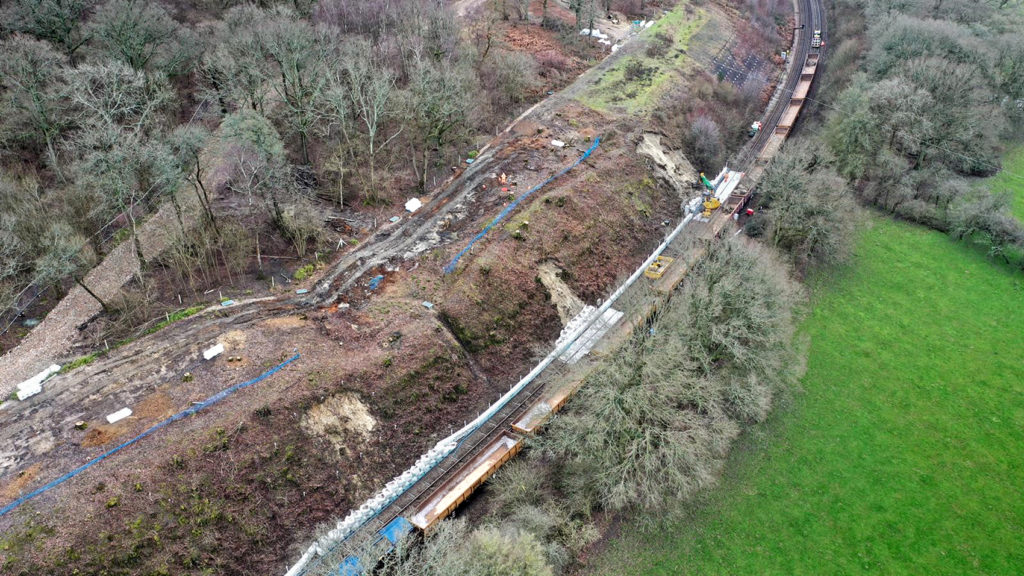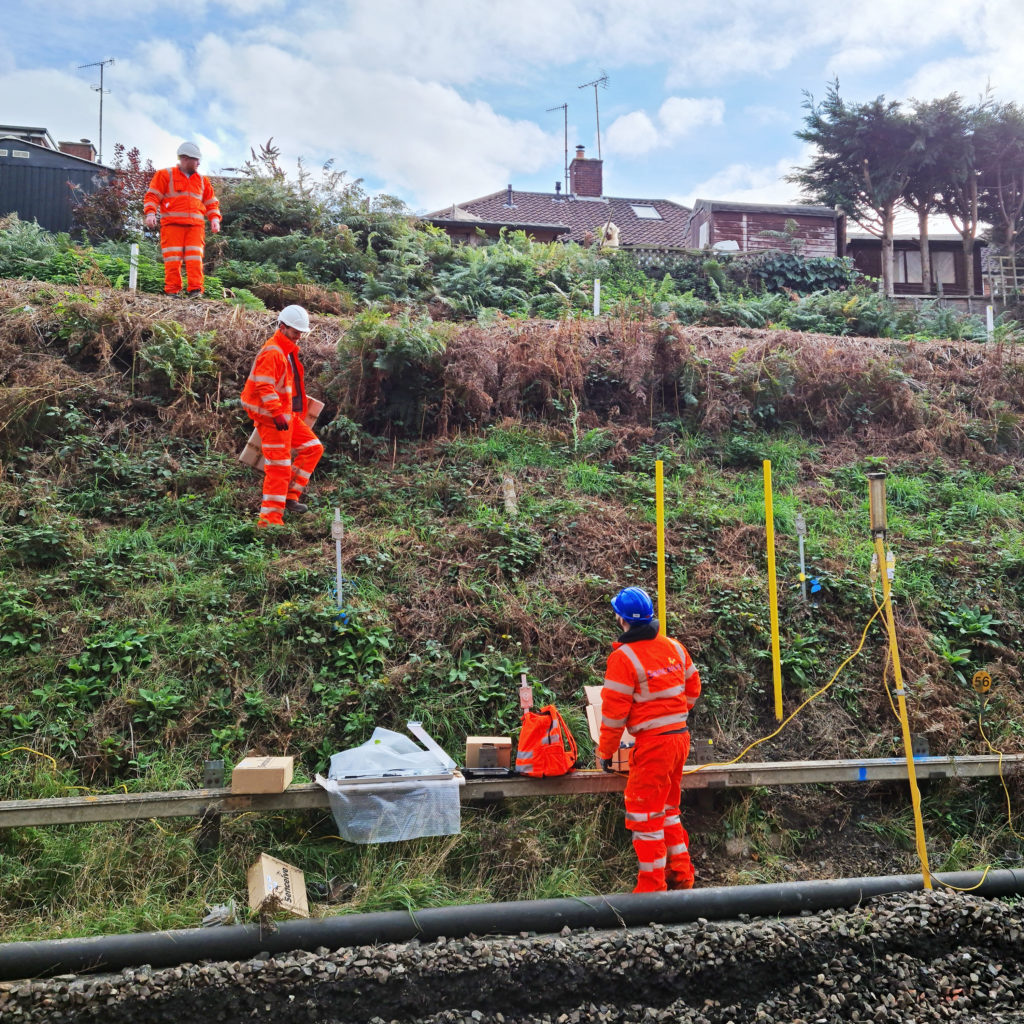The Tonbridge-Hastings line was built by the South Eastern Railway company in the early 1850s ‘as economically as possible’ using a contractor whose expertise extended to invoicing for more work than was actually done. Added to that, it would be almost another century before Terzaghi and Peck, in 1948, introduced the formal concept of soil mechanics. As a result, such nominal matters as cutting and embankment slope angles were determined by ‘what had worked so far’.

What had worked so far were cutting slope angles of around 40º. To put this in context, just consider the general cutting slopes in current motorway construction. Depending on the soil of course, modern standards would expect slopes of around 20º.
The end product was a railway with over-steep-sided cuttings and embankments, confined within a tight land boundary and built using some dubious and, at times, shady practices. In the current vernacular, many modern engineers – looking at the contractor, the supervision and the lack of formal soils engineering – might say, “Good luck with that one!”
Such cautionary words were not heard – or maybe not even uttered – and, in 1855, Mountfield Tunnel (between Robertsbridge and Battle) promptly collapsed. This was followed by Wadhurst Tunnel (between Wadhurst and Stonegate) in 1862. Invoices for six-ring linings did not match the four rings that had been installed. Grove Hill Tunnel (between Tunbridge Wells and Frant) had but a single ring of bricks, but this omission was discovered before it had a chance to collapse.
However, subsequent expensive repairs to the tunnels did not resolve the underlying problems with the route. Over 150 years later, and after several years of very wet winters all affecting the geology of Kent, the management of the line remains a problem.
Cuttings versus embankments
Derek Butcher, Route Asset Manager for Geotechnical (Kent, Sussex and Wessex), and Emmanouil Tsoukalas (Manos), Senior Asset Engineer for Kent, lead Network Rail’s team tasked with the tricky issue of ensuring both the safety of trains and the long-term structural viability of the link between Tonbridge and Hastings, as well as several other routes in the South of England!
They have been working on a method of giving 24/7 protection to trains even though there cannot be the same degree of on-site presence. The human resources would be too great and it would greatly increase the risks to people having them continuously exposed to moving traffic.


Their attention is primarily on cuttings because there is a fundamental difference between the way cutting slopes and embankments fail.
Embankments can fail catastrophically, but – like many structures – they do have the common decency of giving an element of warning. Small movements in track geometry can be seen by track patrollers, can be detected by track recording trains and can be felt by train crew and passengers long before any failure develops. However, rectifying an embankment failure – with track suspended in mid-air – may take months.
On the other hand, movements in cutting slopes are difficult to detect by sight and are not detectable by recording trains or train crew. The failures in themselves may be minor, with just a few tonnes of soil detaching from the cutting slopes. Remedial work may take just a few hours, but if the spoil reaches the track and is undetected then there is a significant risk of a train colliding with the rubble at speed and a subsequent derailment.
Historic monitoring
Historically, incipient cutting failures have been recognised and monitored. The process was crude, expensive, but effective. The simplest regime was to drive pegs into the slope and measure distances between them. Any failure would manifest itself by disturbing the existing measurements. The weakness lay in the ability of those on site being able to take accurate readings in all weathers, compounded by the availability of the staff required.
Manual monitoring of a slope would be done weekly or every day, up to twice a day. Only if something was actively failing would a slope be monitored more frequently. With a route as susceptible to severe weather and with many vulnerable sites, these sorts of regimes become untenable.
Funding
Nationally there is funding from the Government to proactively intervene in cuttings which pose the greatest safety risk. Derek reacted, “We rolled out quite a massive programme in terms of budget and scale in CP6, and real credit is due to our directors who allocated funding of about £3 million in Kent and £3 million in Sussex.
“What is really satisfying is that we’re introducing new technology. We’re one of the first routes to experiment with drones to capture information from above to create images or 3D models. The central team has put a good focus in using LIDAR information (Laser Imaging Detection And Ranging).
“In 2014, we had a helicopter pass and another in 2020 to compare how much detail had changed in the models created.”
Remote monitoring
In the years before Manos joined Network Rail, he had worked with a monitoring contractor, checking the behaviour of buildings around the site of the Victoria Station expansion. He was thus familiar with the installation and use of networked tiltmeters.
Manos explained, “It seemed logical to me that the same technology could be used to provide an almost real-time picture of the state of the worst cutting slopes on the route. In 2018, we acquired 20 tiltmeter units and the results were very promising.”
As it says on the tin, these devices measure the changes in tilt of a unit in three dimensions when fixed to a peg driven to a known depth into a cutting slope. If the slope moves, then the tiltmeter registers a change and, with a bit of smart calculation, it is possible to deduce how far and in what direction the slope itself has moved.
Each unit has a battery that powers a small processor that sends out a signal wirelessly to adjacent tiltmeter units and to a master PC that collates all the gathered information. The overall picture of the units, which are arranged in rows on the slope, is logged and compared with a set of rules laid down at the initial design stages of the monitoring scheme.
If the monitoring PC detects a movement in a sensor, it first checks whether the movement is logical or whether it could have a spurious cause – animals, a falling branch or even human clumsiness. If a subsequent measurement shows that the reading is real, then the site is photographed by one of several cameras positioned to give a view of any problem. If it persists, then an alert email and text is sent to an engineer for assessment. In the early experimental days, these messages were sent direct to either Derek or Manos, but it became obvious that issues such as holidays, other work and sleep could get in the way.

Train alerts
Conversations were held with Control – the 24/7 organisation that deals with all train running – so that alerts could be processed through a team of ‘flight engineers’. These engineers look at the alert data and images, interpret what is going on and decide whether it is necessary to stop traffic until there is an on-site assessment. Being within the Control organisation gives a direct link to train movements.

This process proved its worth at Wadhurst Tunnel, site of the 1862 failure. There were serious potential slope incursions around the tunnel portal. The system flagged up movement and trains were stopped in time before the track was obstructed.
The grid system of detectors works best in granular and clay slopes. It cannot be used in the same way on rock cuttings as it is not possible to drive in the pegs! However, it is possible to detect any impact on a barrier fence at the base of a rock slope that gets struck by debris.

The project gathers pace

From the early beginnings with just 20 tiltmeters, the team now has control of 5,100 units – supplied by Senceive – installed on 70 sites around their patch. The term ‘real-time’ was qualified earlier because there is always a time lag between one measurement and the next. This is currently set at five minutes – a balance between the realistic likelihood of a movement with the need to avoid too much data and to prolong the battery life which, for the tiltmeters, can be two years or more. But a unit continuously trying to register on its local network can consume more power. Logging frequency is increased if the system detects movement. The coordinating PC and the cameras are powered by solar panels.
Technology is advancing very quickly. At the moment, efforts are concentrated on those sites of greatest risk. Equipment still needs attendance for inspection and maintenance; it is not completely autonomous. However, it is not beyond all possibilities that real-time visualisation of all at-risk slopes could take place from one bank of screens.
The common platform
As often happens with a rapidly expanding project, there can be many differing forms of information from a variety of differing systems. At the moment these are widely varied, with little in the way of a common platform. It is an aspiration – at present being explored with Sixense – to bring as many legacy systems together in a single format to streamline the effective management of these 150+ year old assets, with their dubious historic build quality.
“Good luck with that one too!”

